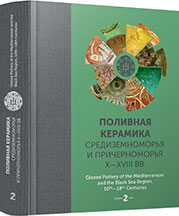Ishkornaïa : de l’usage de la soude végétale dans les revêtements céramiques (Paykend, oasis de Boukhara, IXe—XIXe siècles)
Ishkornaya: the use of vegetal soda plant in ceramic coverings (Paykend, Bukhara oasis, 9th—19th centuries)
Author(s): Guergana Guionova, Mathilde Bouquet
Subject(s): History, Archaeology, Middle Ages, 6th to 12th Centuries
Published by: Издательский дом Stratum, Университет «Высшая антропологическая школа»
Keywords: Central Asia; Islamic Period; Timurid Period; Post-Timurid Period; Pottery; Alkaline Glaze
Summary/Abstract: The terms of ishkornaya or ishkor ware are used in the western archaeological literature. They relate to the alkaline glazes produced from plant ashes. This technique is still used nowadays. The archaeological material from Paykend provides the samples with opaque or transparent alkaline glaze from the 9th—10th century and later, from Timurid and post-Timurid period. The first ones are produced in Paykend’s pottery workshop. The following are from the oasis region. They are characterized by the presence of the siliceous slip between the earthenware body and the glaze. This observation remains to be confirmed by laboratory tests.
Book: Поливная керамика Средиземноморья и Причерноморья X—XVIII вв.
- Page Range: 767-777
- Page Count: 11
- Publication Year: 2017
- Language: French
- Content File-PDF

